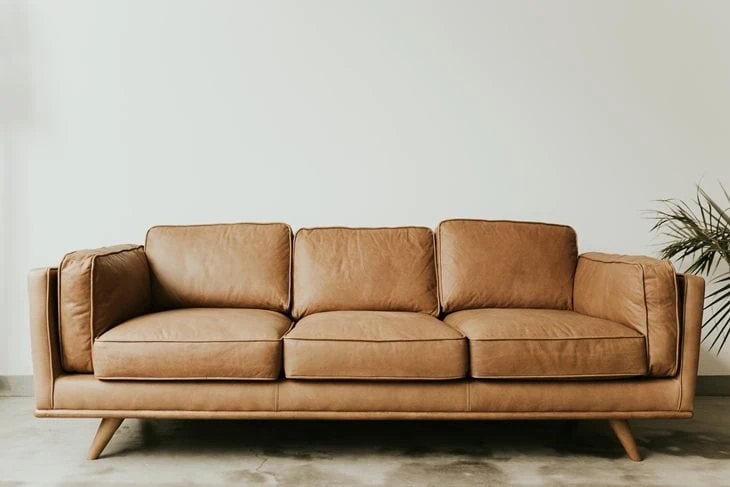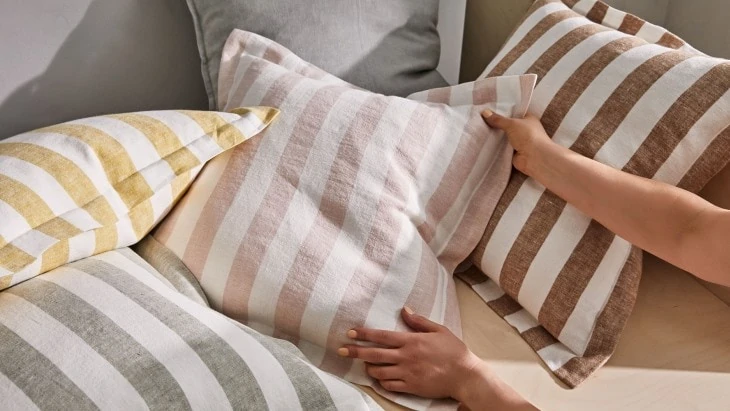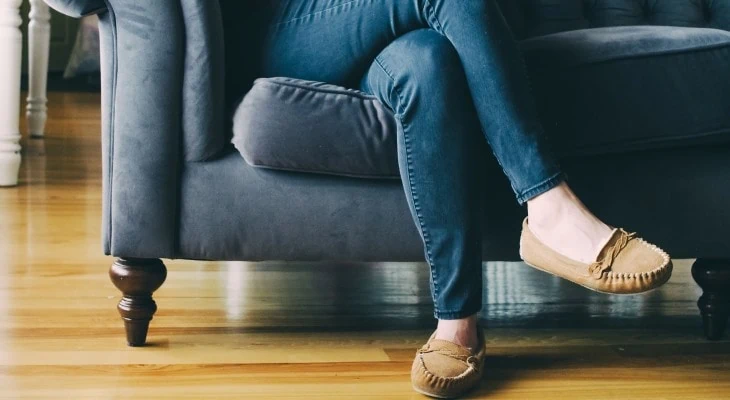If you’ve recently bought a new couch, you may sit on it for the first time and think, “My new sofa is uncomfortable.” Just like getting a new pair of shoes, you need to take the time to break in your furniture.
In order to break in a couch quickly, you need to sit on it daily and constantly fluff the cushions. You can also alter the amount of stuffing inside them. This will help alleviate the stiffness that you find uncomfortable.
Table of Contents
Why is My New Couch So Stiff?

Couch cushions can be made out of a variety of materials such as cotton, polyester, etc. New, freshly woven fibers need to stretch out and shrink repeatedly in order for them to achieve a “worn in” feel.
Just like materials on the outside of the cushion, the stuffing or foam on the inside needs working over in order to settle and compact. When they are first made, cushions are sometimes overstuffed with the expectation that the stuffing will become compressed over time.
A combination of thick fabric plus fresh, unpacked stuffing leads to the uncomfortable stiffness that is often felt in new couches.
One less common reason is that some cushions are still made with spring fillers. Just like with other forms of cushion fill, they need time to wear out.
How Long Does It Take to Break in a Couch?
The good news is that couches get softer over time. It typically takes between one or two months for you to start feeling like your sofa is finally losing its uncomfortable stiffness.
The more you sit on it, the quicker this will happen. Fortunately, you have a couple of options at your disposal to speed up this process.
How to Make a Stiff Couch More Comfortable
There are several options to choose from when you want to figure out how to make couch cushions softer.
Fluff and Punch

Give yourself a miniature boxing session at home and punch away at your new cushions. You can even stand on top of them and jump up and down! Make sure you flip them over halfway through and get both sides evenly.
The goal is to stretch, pull, and relax all the fibers on the outside cushion cover as well as begin the process of packing down the inside stuffing. Repeat this once a day until you feel your sofa cushions are just right.
Be warned, if you have leather cushions, it is not advised that you put too much pressure on them because you could cause the leather to split and create stress cracks.
Alter the Stuffing
If you feel you have been working over your new cushions for quite a long time and they still aren’t softening up, the problem may be that they are overstuffed or they have a denser foam on the inside.
If the cushion filling is polyfill stuffing, you can unzip the side and take small amounts of it out. Work the remaining stuffing back into place so it’s even and repeat this process until you have found the softness you like.
Another option is to replace the foam padding. It is measured by density and the usual range beeing 1.5 to 2.5, with 1.5 being the softest and 2.5 being the firmest. The cushion may have a tag that can inform you of the foam density.
You can swap out the pad for a lower density foam to your liking.
Work the Fabric
If you are able to remove the fabric liner, try washing it per the instructions to help relax the fibers.
Small amounts of vaseline applied to leather cushions and rubbed in can help to loosen it slightly. Place a very tiny amount near the center of the cushion and slowly rub it in until it is almost completely absorbed.
It is not recommended you do this for any other material as it could ruin the cushion.
Just Sit on It

Though this is not the quickest way to soften your new couch cushions, it is by far the easiest and low effort option. Daily sitting will eventually soften up your new sofa as it gets worn in.
Flip the cushions over once a week so that both sides are getting worn in evenly and to help prevent the dreaded “butt dip” in the center.
While you wait for the couch to lose its stiffness, you can throw a thick comforter or duvet over the top of it to increase comfort levels in the meantime.
Final Thoughts
It can take a bit of patience to make your new couch just the right comfort level. But speeding up the process is possible by manually working over the cushions on a regular basis.


I just bought 2 England couches and they are really uncomfortable! The cushions come apart when you sit on them and you fall in between them! I had an inspector come in to check them out and he took pics of how the cushions separate and don’t stay in place and he said that he was going to put it in his report and when I called the store I bought them from, wondering the status of the report, the store manager told me that he said that the couches were fine and that nothing was wrong with them!
Needless to say, I’m furious that the inspector completely contradicted himself and I don’t know what to do about this.
Hi. I am soooo disappointed in the firmness of my new sofa. Ouch!! It’s hard.
I would have thought there would be a machine or something that could bludgeon it siofter??
Please help. I don’t want the expense of exchanging foam/filling.
I am in the same boat. Sofa is so firm it hurts my hips. I am trying new foam inserts but I am thinking it is the metal underneath that isn’t offering enough give. I feel like Golidlocks, before she found the one that was just right.